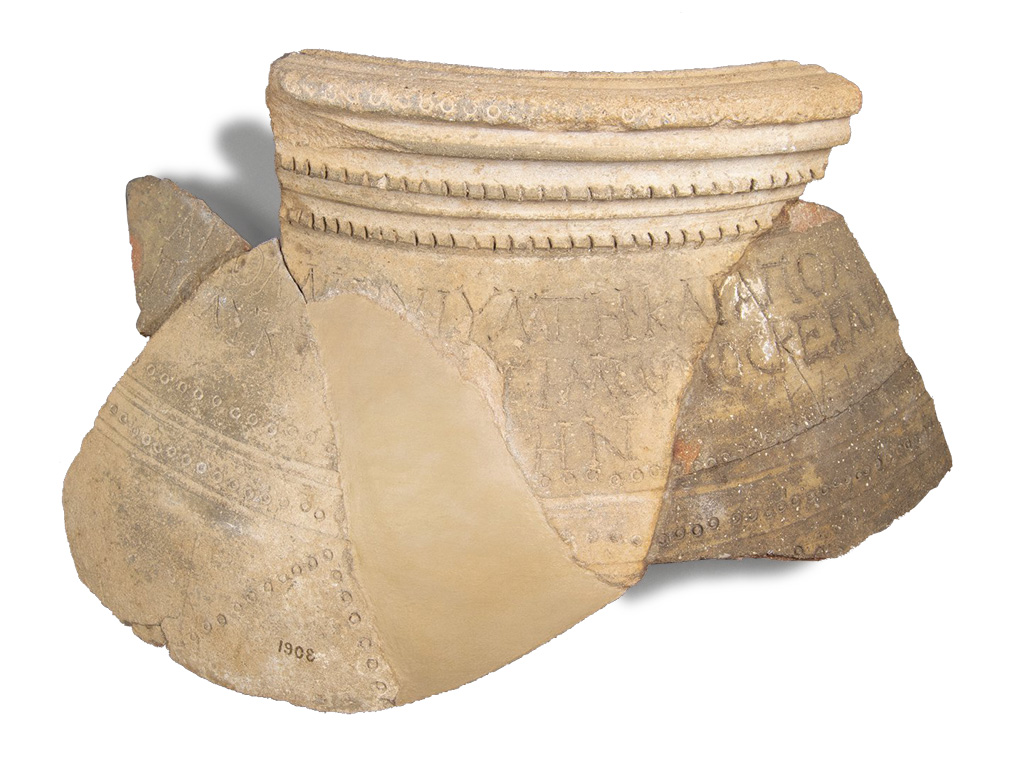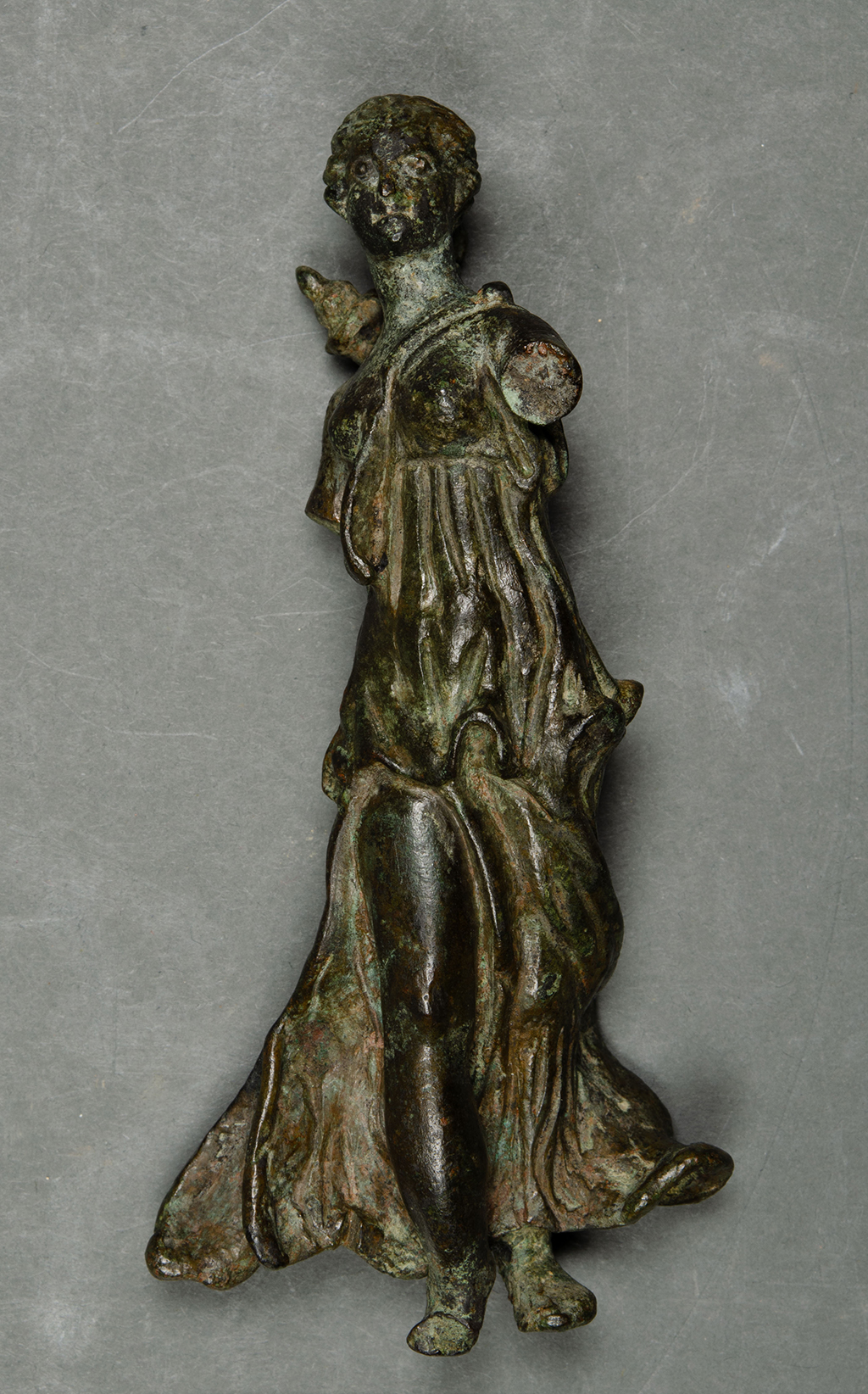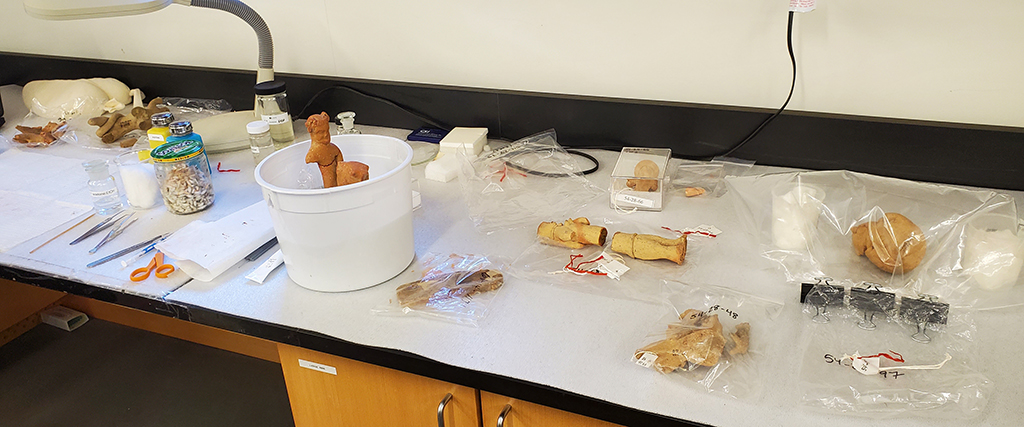
In the Conservation Lab, we are working on objects for the new Eastern Mediterranean Gallery opening this coming November. The gallery will have objects from the Near East, Mediterranean, and Egypt, showing how this region is a crossroads of culture and trade. People are central to this concept and many names and faces will be on display. Some of these artifacts were in the Canaan and Ancient Israel Gallery deinstalled last summer, but other pieces have not been displayed before.
Every object going on display must be documented and treated by a conservator. Many of the objects going into the new Eastern Mediterranean Gallery are challenging to conserve because they come from archaeological contexts and have been previously treated, either before arriving at the Museum or by Museum conservators many years ago. Most of these treatments were not recorded as they predate the formation of the Conservation Department at the Penn Museum, and many of these old treatments include adhesives and fill materials that are failing. In these cases, the old materials must be removed, and the reconstructions redone with new, more stable materials.
So far, some of the most satisfying objects I have treated for the new gallery have been the archaeological material from the Sanctuary of Apollo Hylates at Kourion. Excavated by the University of Pennsylvania beginning in the 1930s, Kourion was an important ancient city-state on the coast of Cyprus. The sanctuary was one of the main religious complexes on the island. The objects brought back to the Penn Museum include ceramics, metals, ivory, and stone dating from ca. 5000 BCE to ca. 300 CE.
One of the first big projects was a very large pithos fragment. It has a Greek inscription that says the pithos, or storage jar, was made by the potter Polyktetos, son of Timon, as a votive offering to Apollo Hylates and Apollo of Caesar. Interestingly, the Metropolitan Museum of Art had several fragments of the pithos which were acquired in 1874. When Penn excavated the site and found more fragments in 1935, it was discovered that they joined. The pieces were reunited and then later brought to the Penn Museum in 1955.
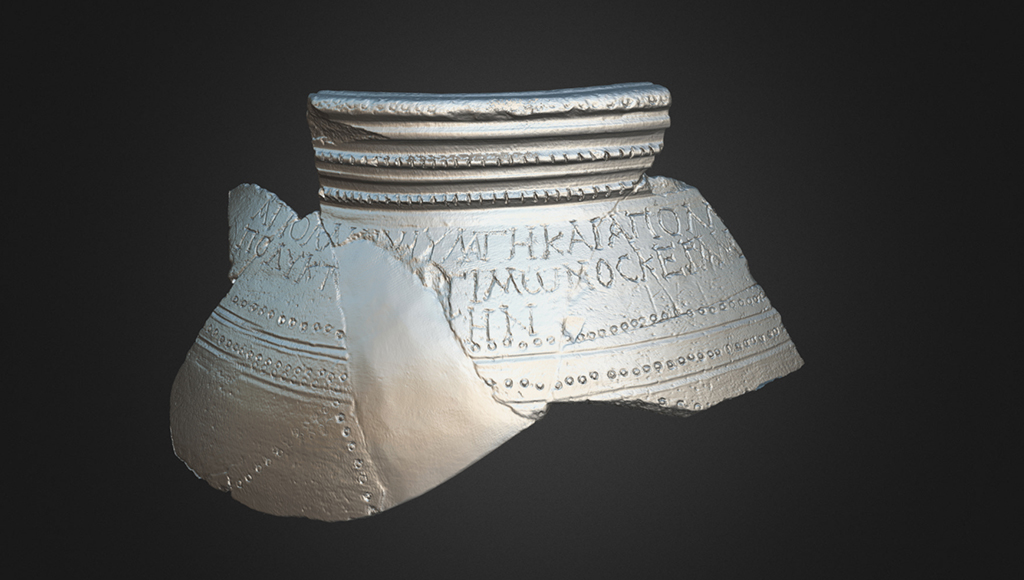
The pithos had been reconstructed with many different materials over several campaigns: plaster, staples, rods, pins, and at least three types of adhesives. When it arrived on my desk, the plaster was cracked and unstable, the pins were loose and damaging the ceramic, and the adhesive between two of the sections had failed so that it was in pieces. All this material had to be carefully and time-consumingly removed and the pithos fragments disassembled.
After cleaning the ceramic, I reconstructed the pithos with a strong, stable, and reversible adhesive. A large section in the middle is missing and had to be filled as well. With archaeological ceramics, we try to only fill losses for structural reasons or to make the original appearance of the vessel more understandable. With the color variation in the ceramic fragments, I painted the fill a neutral color to be sympathetic to the ceramic without trying to match the appearance of the pithos.
Accurate measurements were taken once the pithos was conserved. The pithos has very thick walls and a wide rim. Although we only have a section of it, the prevalence and symmetry of similar vessels allow researchers to use the rim diameter and wall thickness to draw the likely profile of the vessel. The profile is then compared to other similar pithoi to extrapolate the pithos’s full diameter and height. Based on the rim measurements, we know that this pithos would have probably once been 4 or 5 feet tall and almost just as wide—large enough for a child to sit inside.
My colleague, Steve Lang, then 3D-scanned the pithos. Normally, we use raking light to better see the inscription but in this case the size, texture, and curvature made it difficult to read. With the 3D scan, the texture data can be removed in the computer software to just see the geometry of the surface and the lighting can be adjusted to bring out small details. This made the inscription much clearer and more legible. We will use the data from the 3D scan and from the measurements to create an interactive in the new Eastern Mediterranean Gallery. A cut-away replica will be made and embedded in the wall so that visitors can get a sense of the scale of the pithos.
Of course, not all the ceramics needed such a long and involved conservation treatment. I batch treated about twenty-five ceramic figurines from the Sanctuary of Apollo Hylates. The figurines are made from baked clay which is sometimes called terracotta. Batch treatment means I had many figurines going through similar treatment steps at once. People used ceramic figurines as offerings to the god Apollo, leaving them as votive offerings to stand in place of the worshipper. These figurines range from musicians to charioteers, and from a dog to a centaur. They were shaped by hand or using molds, sometimes combining both techniques in one figurine. Different elements were sometimes created separately and smashed together while the clay was still wet, such as placing a rider on a horse. In a chariot with two men being pulled by four horses, the figurines’ faces were cast from the same mold, but the other elements were shaped by hand and pressed together. This method created some interesting challenges when it came to reconstructing the figurines.
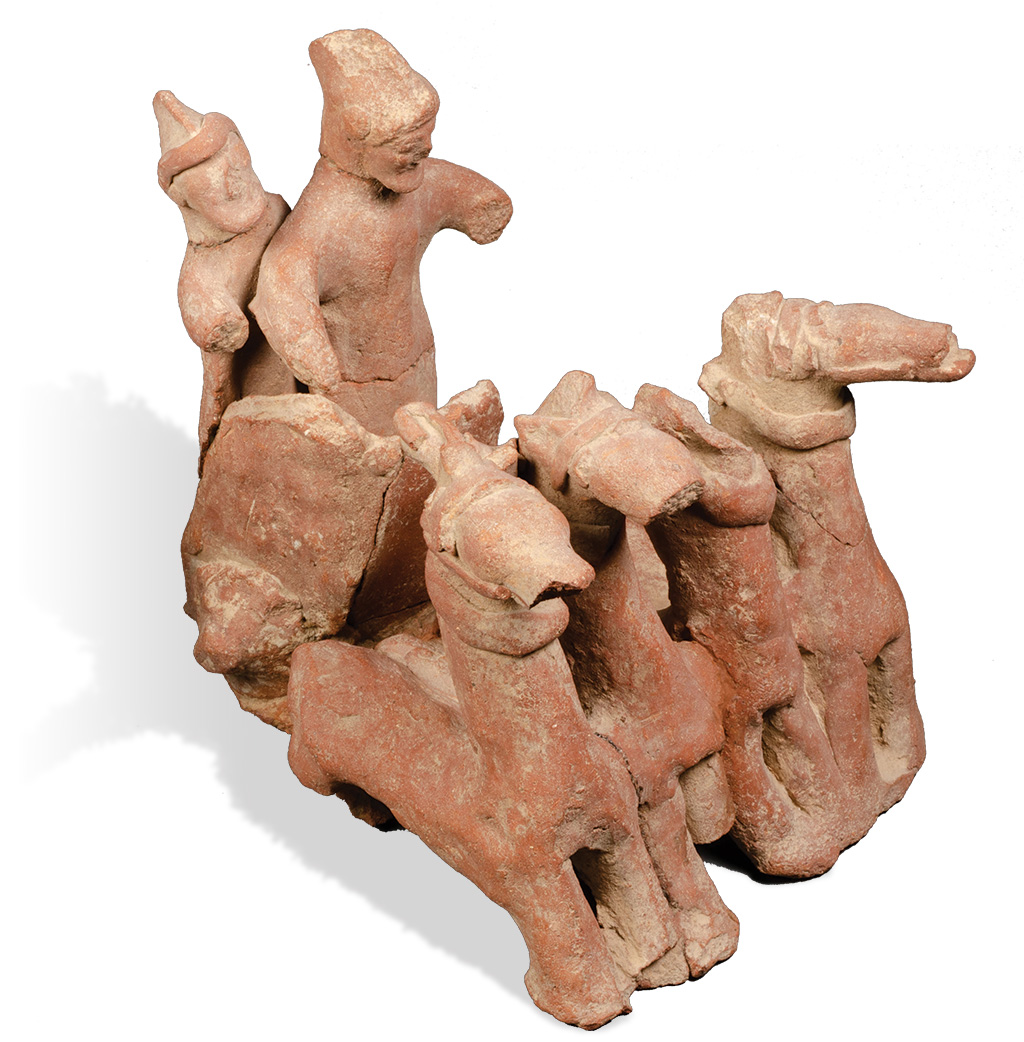
Museum Object Number(s): 54-28-81
Because of the way the figurines were made, sections made separately have come apart due to their poor joins. These joins generally did not have an obvious point of connection and I had to situate them by feel. Did that soldier want to sit upright on his horse, or did he want to lean slightly forward? Where along the horse’s neck did the horse gear fit? In the case of the chariot, one of the wheels and part of the riding gear had detached, and the chariot had broken off from the horses. Finding the correct placement and orientation of these elements was difficult, but it was satisfying finding where they fit best.
Many of the figurines are fragmentary and had been reconstructed previously. Like the pithos, many of the old treatments were failing. I disassembled, cleaned, and reconstructed each figurine. This generally involved placing them in a vapor chamber to take down old joins, cleaning off old adhesive, mechanically removing old fill materials, then rejoining the pieces with a more stable adhesive using a sand tray or a bucket of glass beads.
On another figurine, a shepherd had been previously reconstructed with a ram awkwardly adhered in place of his missing left arm. However, when I took apart the figurine and started to play with the pieces, I found that the ram wanted to sit across the figure’s shoulder. The curvature of the ram’s belly matched the figurine’s neck and left shoulder and locked into place fairly well, so I could be certain that was actually the correct place.
Of course, ceramic is not the only material found at Kourion. We also treated small copper alloy figurines, bowls, knucklebones, and a plaque, as well as stone seals and statues. Many of these objects just needed to be cleaned. Discolored or brittle surface coatings, waxy deposits, and grime from handling were removed. A couple of the copper alloy bowls had old joins and needed to be taken down and reconstructed like the ceramic figurines as well.
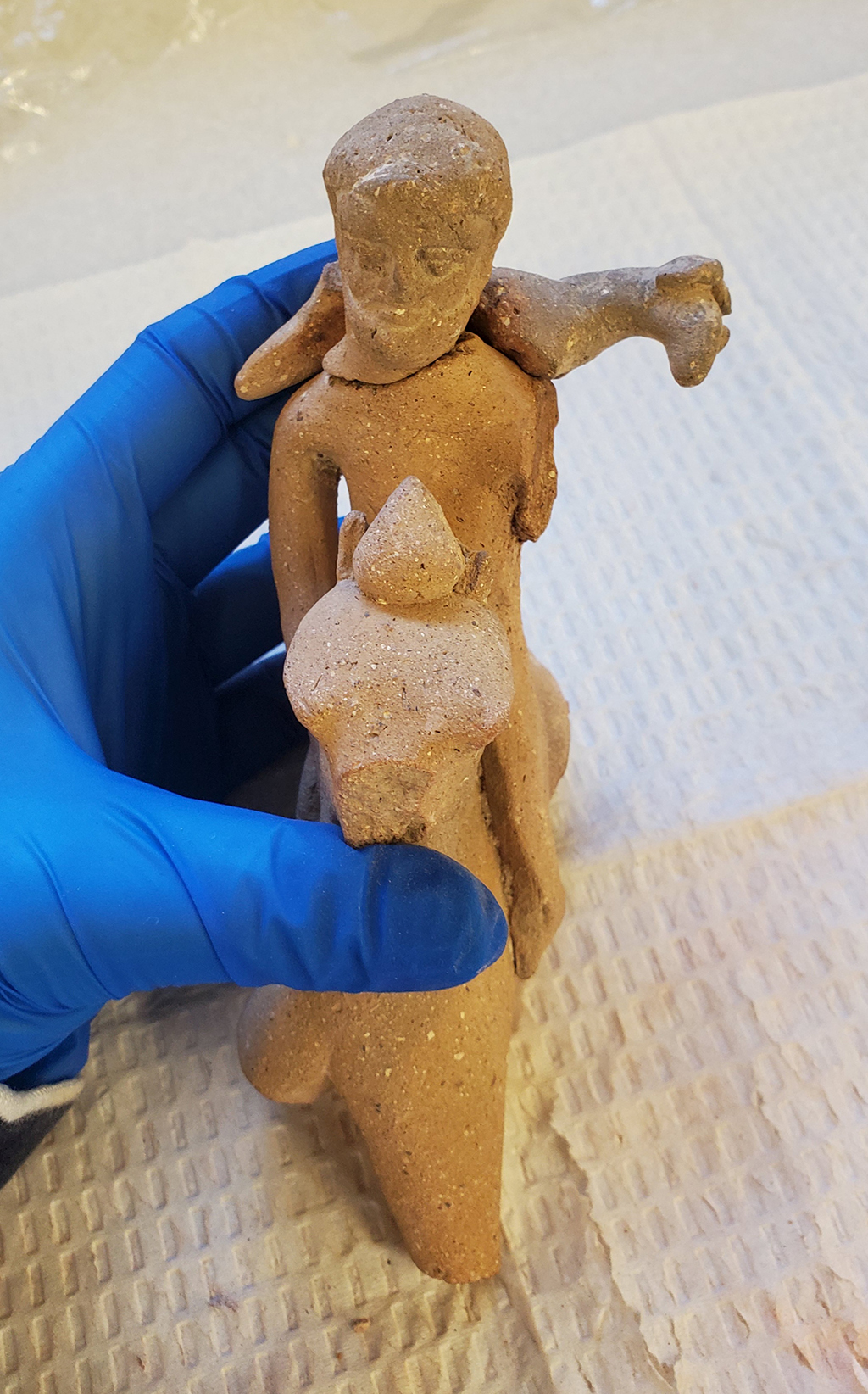
Museum Object Number(s): 54-28-48
The Sanctuary of Apollo objects are now ready to be exhibited in the Eastern Mediterranean Gallery. I am excited to see the crowd of figurines grouped in the gallery as if they were votive offerings once again, and to be able to stand next to a full-scale pithos reconstruction. From the words of the potter carved into a pithos to the fingerprints of a worshipper preserved in a clay figurine, these objects tell the story of everyday people and connect us to their experiences.
Jessica Byler is a Project Conservator in the Penn Museum’s Conservation Department.

